No longer the niche interest of gardening geeks, pollinator gardens and native plants are gaining traction–especially in areas of the country prone to long hot summers and drought. Growing awareness of climate change, sustainability issues, and insect decline have encouraged people to take a closer look at how landscapes are managed.
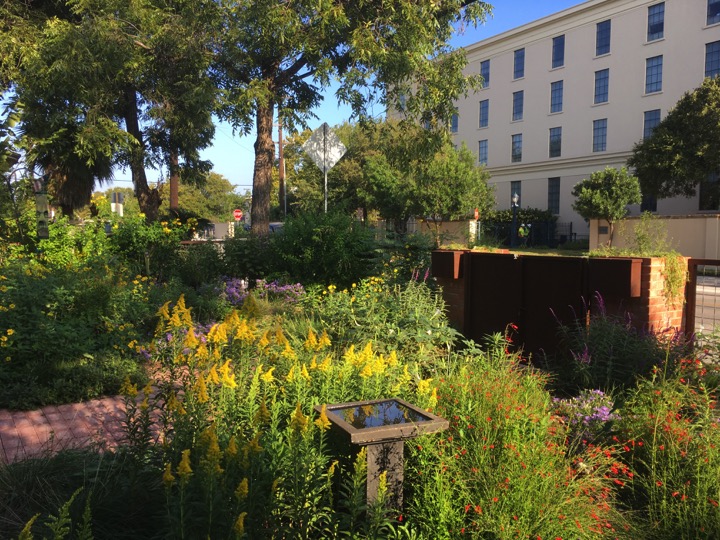
Late season goldenrod in downtown San Antonio pollinator garden. Ready for migrating monarchs and other pollinators. Photo by Monika Maeckle
One of the primary forces behind this shift are public water utilities, who must provide water to taxpayers whether it rains or not.
“I’m glad to say we are not unique on the sustainable gardening focus,” said Karen Guz, Conservation Director at San Antonio Water Services (SAWS), the Alamo City’s public water utility.
Guz will be heading to Tucson later this week to represent San Antonio at a sustainable water conference hosted by the American Water Works Association. She’ll join utility reps from Oklahoma, Denver, Oregon, and California to share lessons on how cities are promoting sustainable landscapes and discouraging water guzzling grass lawns during an era of drought and unpredictable weather.
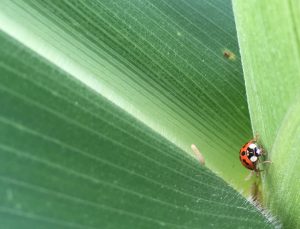
Ladybugs keep certain pests in check. Photo by Monika Maeckle
SAWS’ conservation department launched the useful GardenStyle San Antonio website in 2014, a few years following the historic Texas drought of 2011. The site promotes the use of native plants and sustainable garden designs, and shares instructional articles, local plant lists, and how-to videos on everything from pruning crepe myrtles to detecting leaks in your irrigation system. SAWS also publishes a handy, full-color hyperlocal guide, Top 100 Plants for San Antonio. Not all of the plants listed and recommended are native, but all are well-adapted to San Antonio’s hot summers.
Guz said that while public utilities are tackling water conservation related to landscaping in various ways, they share common themes: encourage people to use regionally appropriate plants so as not to waste water. In San Antonio, for example, 70% of water used during the summer is tapped for landscape irrigation. Native plants, well adapted to our particular climate, require much less water, fertilizer and general attention.
The Ladybird Johnson Wildflower Center in Austin also reports a growing interest in pollinator and native plants. The botanical garden devoted to natives enjoyed a 30% increase in visitors, from 140,000 in 2014, to 200,000 in 2018, said Lee Clippard, 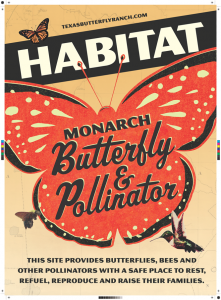
In an annual survey of 808 people done last year by the American Society of Landscape Architects, native plants were cited as the number one outdoor project type demanded by consumers, capturing 83.3 percent of votes. Not far behind: low-maintenance landscapes with 80.0 percent of votes, and rain gardens, with 71.2 percent. In 2017, the top three priorities were native plants (81.6 percent), low-maintenance landscapes (79.3 percent) and food/vegetable gardens (76.5) percent.
Vegetable gardens have always been popular and recent studies show that planting wildflowers and or native plants with your tomato or pepper patch results in higher vegetable and fruit yields. Makes sense, since wildflowers and natives not only attract bees, they foster beneficial insects that can keep pests in check and help gardeners avoid pesticides. Ladybugs eat aphids, for example.
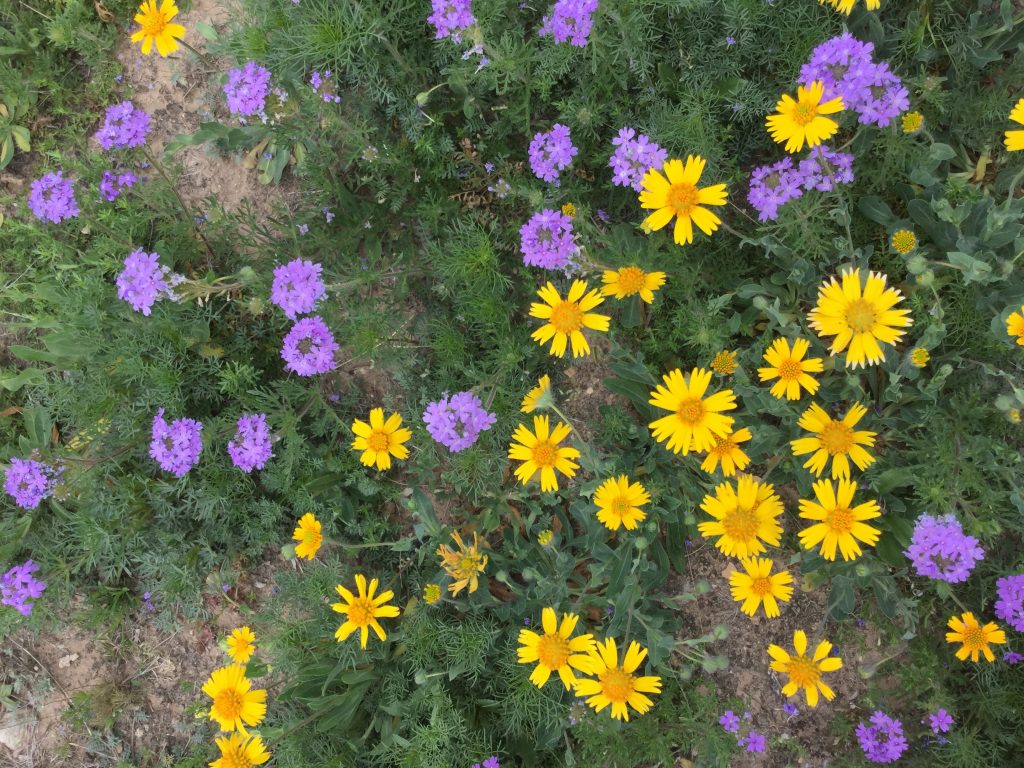
Native plants, also known as wildflowers, can help your vegetable garden, like these purple verbenas and Huisache Daisies. Photo by Monika Maeckle
“Anytime you can plant and have color plants blooming 12 months out of the year–it’s an excellent opportunity not only to enjoy their beauty, but to attract and build your beneficial insect populations,” said David Rodriguez, County Extension Agent for Horticulture at the Texas A&M AgriLife Extension Service. “Bees and hummingbirds, too.”
Growers have been slow to fill in the plant void, leaving pollinator gardeners to rely heavily on pop-up plant sales staged by local gardening organizations. The most challenging aspect of pollinator gardening is often finding the plants appropriate for your local area.
“The challenge remains to connect people with plants native to their ecoregions,” said the Wildflower Center’s Clippard, “and to get more locally grown natives into nurseries and big box stores so that homeowners have access to the right plants for their gardens.”
Brandon Kirby of Rainbow Gardens in San Antonio, which runs two of the largest retail nurseries in town, said he’s been reaching out to commercial growers to cultivate natives specific to San Antonio in response to consumer demand. “We have seen an increase in both new and experienced gardeners looking for pollinator plants in our nursery,” said Kirby. “Newer gardeners typically are looking for butterfly nectar plants while experienced gardeners are looking for rare, unusual, or native choices.”
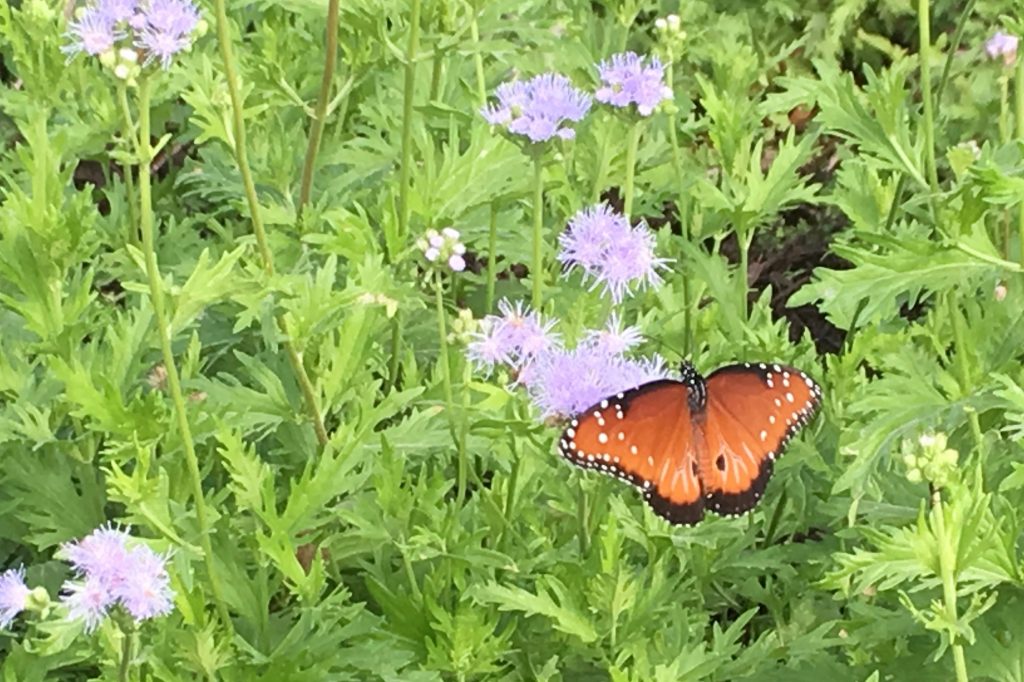
Queen butterfly on Gregg’s Mistflower. The purple bloomer is often called “butterfly crack” by pollinator gardeners. Photo by Monika Maeckle
Kirby said that in the past, Greggs Mistflower, Conoclinium greggii, a purple blooming groundcover that tolerates gravely soils and requires little water, was a “slow mover,” retail parlance for inventory that doesn’t sell. Not anymore. Now it’s become one of the nursery’s top selling perennials for shadier spots, “especially in the fall when the monarchs and queens cover the mistflower in our Monarch Way Station,” he said.
Increased interest in pollinator plants in San Antonio has led Rainbow Gardens to trial a “pollinator table” in 2019, said Kirby. “We keep this table stocked with our favorite native and non-native nectar & host plants,” he said, adding that signage explains the plants growing conditions and what kinds of pollinators it attracts. Response to the pollinator table so far: “very good.”
Retail nurseries like Rainbow Gardens often tell customers they don’t stock certain pollinator plants because the demand doesn’t exist or commercial growers don’t supply them. “In our industry, supply typically follows demand–since demand is limited, we find often find supply limited,” said Kirby.
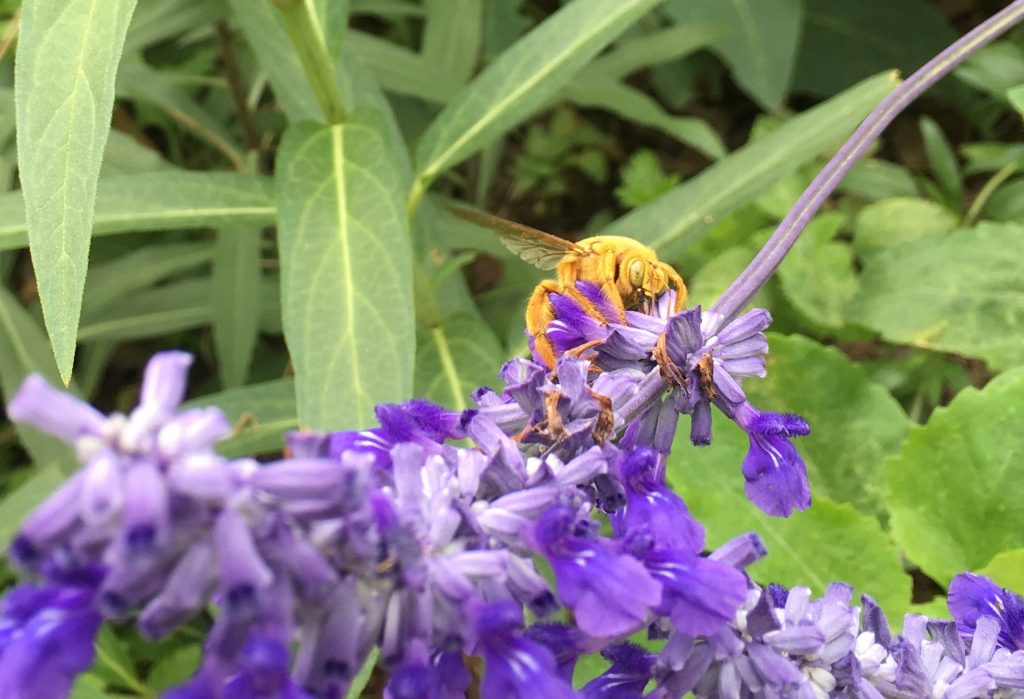
Don’t forget the bees. They’ll make your vegetables yield more fruit. Here, on a carpenter bee on Indigo spires. Photo by Monika Maeckle
That’s why the Texas Butterfly Ranch announced earlier this year that we would name Cowpen Daisy as San Antonio’s Unofficial Pollinator Plant of the Year.
We encourage every reader to enter their local nursery or big box garden department and ask “Do you have any Cowpen Daisy?” Meanwhile, we’ve supplied seed to the City of San Antonio, Master Gardeners, Native Plant Society and others to cultivate the plant and make it available at upcoming plant sales. In fact, Cowpen Daisy, Verbesina enceliodes, will be available Tuesday evening at the Native Plant Society of San Antonio’s monthly meeting. Details here.
The campaign is an offshoot of our successful 300for300 Pollinator Habitat Initiative launched in 2018, aiming to generate 300 pollinator habitats for San Antonio’s 300th birthday. To date, we have 348 gardens registered and we’re still growing–feel free to register here, and check out the mapped gardens, below. What started as a local initiative now has gardens in Dallas, Laredo, and Coronado, California.
Need some help ensuring your neighbors understand what you’re doing in your yard? Check out our shop for a Pollinator Habitat sign.
TOP IMAGE: Long-tailed skipper on Cowpen Daisy. Photo by Monika Maeckle
Related posts:
- Planting a butterfly garden? Here’s tips on how to do it
- Mostly native butterfly garden outperforms lawn every time
- A year in the life of an urban butterfly garden
- Downtown River walk plot converts to pollinator garden, creature haven
- Converting your Lawn to a Butterfly Garden
- San Antonio becomes first National Wildlife Federation Monarch Champion city
- Late season Monarchs create gardening quandary
- What to do with late season Monarchs
- Tropical Milkweed: To Plant it or Not is No Simple Question
- How to raise Eastern Swallowtails
- How to raise Monarch butterflies at home
Like what you’re reading? Don’t miss a single post from the Texas Butterfly Ranch. Sign up for email delivery, like us on Facebook, or follow us on Twitter, @monikam.


Hi Monika,
I included my pollinator garden in your “300” garden group. I live in Laredo. I was surprised to notice that it is not shown on your map. My address is #9 Candlewood Rd., Laredo, Tx 78045. My garden is lush with pollinator favorites. One of the prettiest springs since I started my garden in 2014.
Best wishes,
Jim Fulgham
Hi Jim,
We update the map once a month so it’s possible you missed our update. Should show up in the negxt round. Stay tuned and thanks for your participation.
Monika